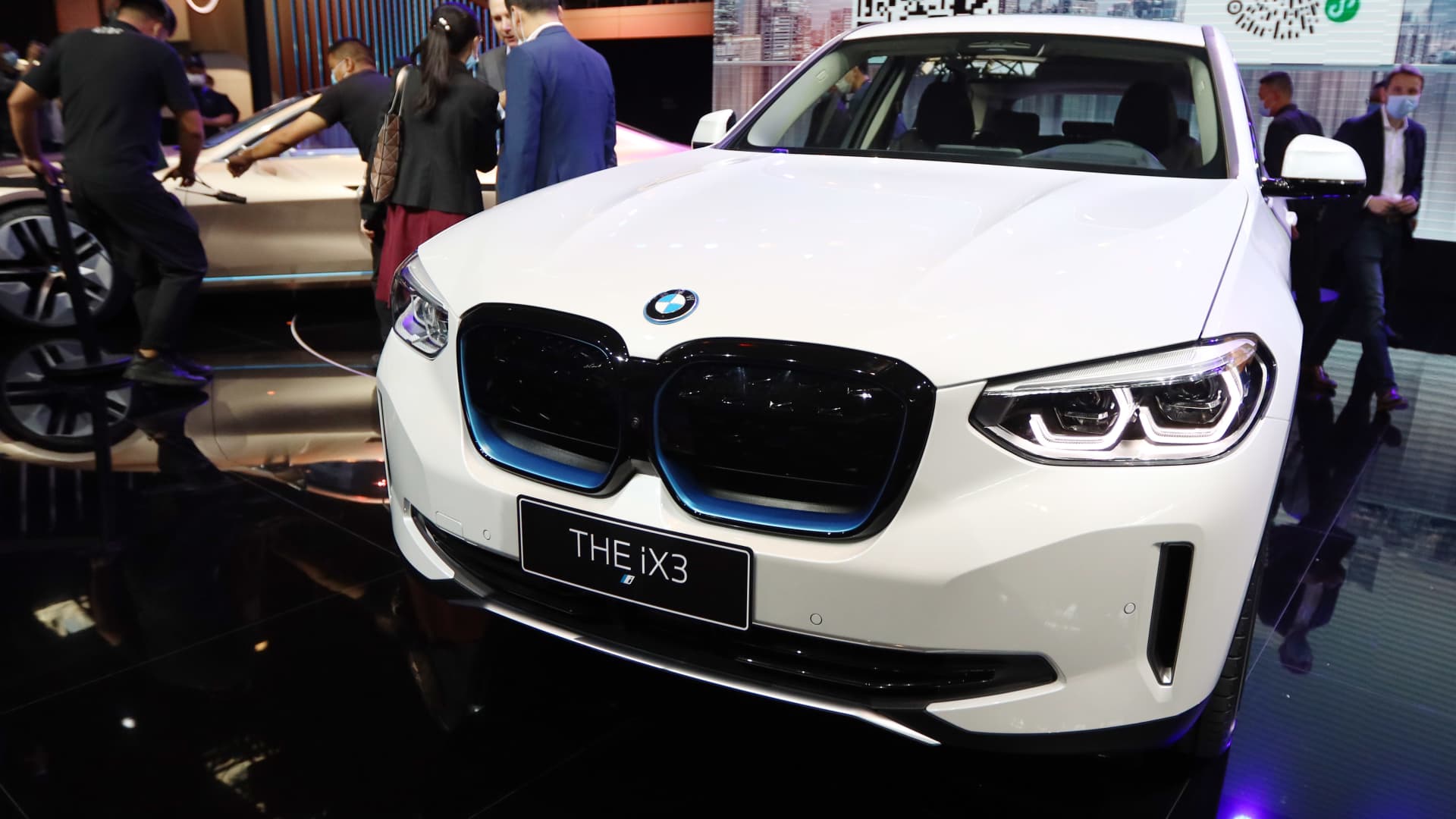Fewer electric vehicles now qualify for federal tax credits after the Biden administration this week unveiled stricter rules for battery sources that will prioritize domestically manufactured models.
The new list published by the Treasury Department includes 16 U.S. manufactured models from Ford, General Motors, Tesla and Stellantis. Ten of the models on the new list will qualify for the full $7,500 tax credit, with the rest qualifying for half that amount. Vehicles losing credits include those from BMW, Hyundai, Nissan, Rivian, Volkswagen and Volvo Cars. Some vehicles from those brands may still qualify for the credits if they are assembled in the U.S. and if certain components are sourced domestically.
The new rules apply to vehicles delivered to consumers starting Tuesday.
Tax incentives for EVs are designed to lower the costs for consumers, who have cited the high prices as a main barrier to going electric. The average new EV in the U.S. costs about $58,600, or almost $10,000 more than the average new vehicle.
The new incentives are part of the Inflation Reduction Act (IRA), the landmark climate law that President Joe Biden signed in August. The bill set various manufacturing requirements for new all-electric and plug-in hybrid vehicles to qualify for the $7,500 tax credit. The law also established limits on sales prices and excluded consumers who earn more than $150,000 a year and couples who earn more than $300,000.
White House officials hope the updated list will incentivize automakers to move their supply chains from China to the U.S. while promoting climate-friendly EVs. China currently makes most EV batteries worldwide.
Under the new rules, electric and plug-in hybrid vehicles can receive the full tax credit only if the vehicles are made in North America and the batteries and critical minerals are from the U.S. or a country with which the U.S. has a free trade agreement.
At least 40% of the critical minerals by value in the vehicle’s batteries must have been extracted, processed or recycled in the U.S. or countries with which it has trade deals. That percentage will increase by 10% each year until it reaches 80% after 2026.
Additionally, at least 50% of the value of the components in an EV’s battery must be manufactured or assembled in North America. That percentage will increase to 60% in 2024 and 2025 and will increase by 10% each year until it hits 90% in 2028.
The new rules may undercut the Biden administration’s proposed tailpipe emissions limits, which could require as many as 67% of all new vehicles sold in the U.S. by 2032 to be all-electric — the country’s most ambitious climate regulation yet.
The transportation sector is the largest source of greenhouse gases in the country, according to the Environmental Protection Agency. Despite a rise in EV sales in the U.S. in recent years, they accounted for only 5.8% of all the 13.8 million new vehicles sold last year, according to data from the Kelley Blue Book. The U.S. is the world’s third-largest market for EVs behind China and Europe.
— John Rosevear contributed to this report.

buy ivermectin – buy candesartan for sale generic tegretol
isotretinoin pill – accutane cost buy generic zyvox 600 mg
buy generic amoxil – order ipratropium 100 mcg online combivent 100mcg cheap
azithromycin 250mg without prescription – nebivolol 5mg usa buy nebivolol 5mg generic
buy omnacortil no prescription – omnacortil brand order generic progesterone
buy lasix without prescription – buy piracetam pills oral betamethasone
purchase acticlate generic – buy generic albuterol generic glucotrol 10mg
buy semaglutide generic – semaglutide order order periactin 4mg pill
buy generic tizanidine over the counter – tizanidine medication microzide pill
buy tadalafil 40mg for sale – cost tadalafil 5mg order viagra 50mg for sale
order atorvastatin 20mg pills – norvasc pills zestril 5mg sale
purchase cenforce pills – glycomet us order metformin sale
order omeprazole – buy prilosec without a prescription buy atenolol 100mg online
how to get depo-medrol without a prescription – purchase triamcinolone pills buy aristocort 10mg
desloratadine order – claritin 10mg for sale order priligy 60mg online
buy misoprostol 200mcg for sale – order generic diltiazem 180mg purchase diltiazem pills
acyclovir 800mg canada – buy rosuvastatin 10mg generic oral rosuvastatin 10mg
domperidone 10mg cheap – flexeril 15mg without prescription cyclobenzaprine pill
buy motilium no prescription – sumycin medication order flexeril pill
inderal 20mg tablet – inderal price methotrexate 5mg uk
warfarin 5mg usa – buy losartan sale order cozaar for sale
order levofloxacin 500mg – buy cheap levaquin generic zantac 150mg
cost nexium – buy nexium 20mg pill order imitrex 25mg
purchase mobic for sale – buy meloxicam 15mg without prescription buy tamsulosin for sale
buy cheap generic zofran – buy aldactone cheap zocor brand
order valtrex without prescription – order diflucan 100mg generic buy generic fluconazole
modafinil 100mg ca buy provigil tablets how to get provigil without a prescription cheap modafinil 100mg brand modafinil 100mg modafinil 200mg pills where can i buy provigil